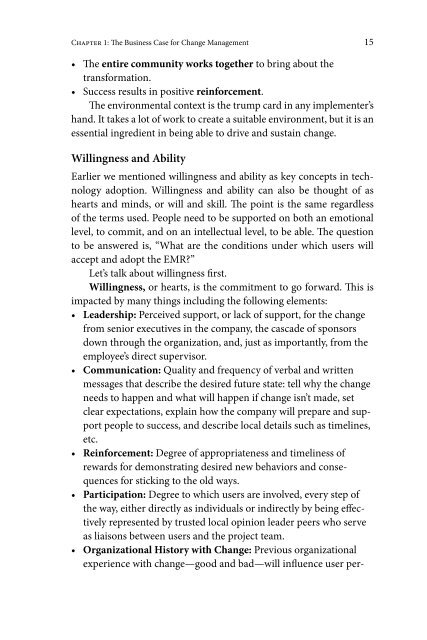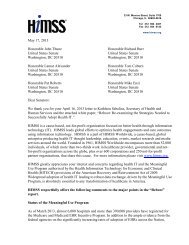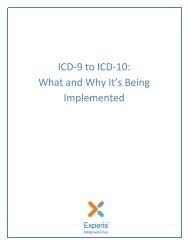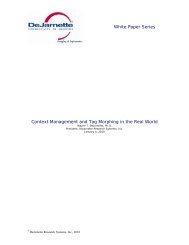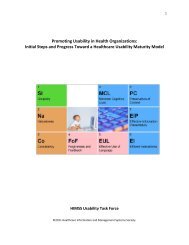Change Management Strategies for an Effective EMR ... - HiMSS
Change Management Strategies for an Effective EMR ... - HiMSS
Change Management Strategies for an Effective EMR ... - HiMSS
Create successful ePaper yourself
Turn your PDF publications into a flip-book with our unique Google optimized e-Paper software.
Chapter 1: Th e Business Case <strong>for</strong> <strong>Ch<strong>an</strong>ge</strong> <strong>M<strong>an</strong>agement</strong> 15<br />
• Th e entire community works together to bring about the<br />
tr<strong>an</strong>s<strong>for</strong>mation.<br />
• Success results in positive rein<strong>for</strong>cement.<br />
Th e environmental context is the trump card in <strong>an</strong>y implementer’s<br />
h<strong>an</strong>d. It takes a lot of work to create a suitable environment, but it is <strong>an</strong><br />
essential ingredient in being able to drive <strong>an</strong>d sustain ch<strong>an</strong>ge.<br />
Willingness <strong>an</strong>d Ability<br />
Earlier we mentioned willingness <strong>an</strong>d ability as key concepts in technology<br />
adoption. Willingness <strong>an</strong>d ability c<strong>an</strong> also be thought of as<br />
hearts <strong>an</strong>d minds, or will <strong>an</strong>d skill. Th e point is the same regardless<br />
of the terms used. People need to be supported on both <strong>an</strong> emotional<br />
level, to commit, <strong>an</strong>d on <strong>an</strong> intellectual level, to be able. Th e question<br />
to be <strong>an</strong>swered is, “What are the conditions under which users will<br />
accept <strong>an</strong>d adopt the <strong>EMR</strong>?”<br />
Let’s talk about willingness fi rst.<br />
Willingness, or hearts, is the commitment to go <strong>for</strong>ward. Th is is<br />
impacted by m<strong>an</strong>y things including the following elements:<br />
• Leadership: Perceived support, or lack of support, <strong>for</strong> the ch<strong>an</strong>ge<br />
from senior executives in the comp<strong>an</strong>y, the cascade of sponsors<br />
down through the org<strong>an</strong>ization, <strong>an</strong>d, just as import<strong>an</strong>tly, from the<br />
employee’s direct supervisor.<br />
• Communication: Quality <strong>an</strong>d frequency of verbal <strong>an</strong>d written<br />
messages that describe the desired future state: tell why the ch<strong>an</strong>ge<br />
needs to happen <strong>an</strong>d what will happen if ch<strong>an</strong>ge isn’t made, set<br />
clear expectations, explain how the comp<strong>an</strong>y will prepare <strong>an</strong>d support<br />
people to success, <strong>an</strong>d describe local details such as timelines,<br />
etc.<br />
• Rein<strong>for</strong>cement: Degree of appropriateness <strong>an</strong>d timeliness of<br />
rewards <strong>for</strong> demonstrating desired new behaviors <strong>an</strong>d consequences<br />
<strong>for</strong> sticking to the old ways.<br />
• Participation: Degree to which users are involved, every step of<br />
the way, either directly as individuals or indirectly by being eff ectively<br />
represented by trusted local opinion leader peers who serve<br />
as liaisons between users <strong>an</strong>d the project team.<br />
• Org<strong>an</strong>izational History with <strong>Ch<strong>an</strong>ge</strong>: Previous org<strong>an</strong>izational<br />
experience with ch<strong>an</strong>ge—good <strong>an</strong>d bad—will infl uence user per-


